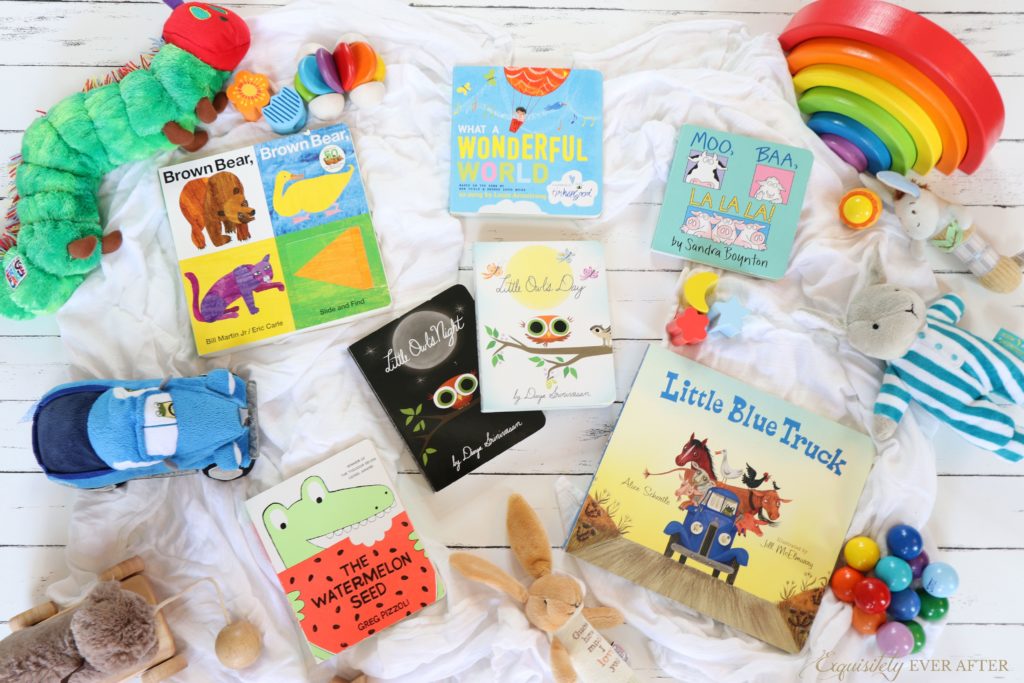
This post contains some affiliate links. Please see more here.
SUMMARY: What makes a great board book? How can you use board books to create an engaging and effective learning experience for your young child? How can you boost your child’s language acquisition and build your child’s confidence during your read-aloud experience? In this first episode of the Exquisitely Ever Podcast, I discuss seven of the best board books for 6-month to 24-month-olds that will keep your toddler engaged and stimulated while also growing his/her brain.
I’m always on the hunt for a great new board book, so please let me know in the comments below: what are your favorite books to read to toddlers? And don’t forget to grab your FREE printable list of my 25 Best Board Books for Toddlers! Take care, keep safe, and keep reading!
Listen to the Podcast Episode:
Books Mentioned In This Episode:
*The Watermelon Seed by Greg Pizzoli
*Brown Bear Brown Bear What Do You See? by Bill Martin, illustrated by Eric Carle
The Very Hungry Caterpillar by Eric Carle
*Little Blue Truck by Alice Schertle, illustrated by Jill McElmurry
Little Blue Truck’s Halloween by Alice Schertle, illustrated by Jill McElmurry
Little Blue Truck’s Christmas by Alice Schertle, illustrated by Jill McElmurry
Little Blue Truck’s Springtime by Alice Schertle, illustrated by Jill McElmurry
Little Blue Truck Leads the Way by Alice Schertle, illustrated by Jill McElmurry
Little Blue Truck’s Valentine by Alice Schertle, illustrated by Jill McElmurry
*What A Wonderful World by Bob Thiele and George David Weiss, illustrated by Tim Hopgood
Thirty Million Words: Building a Child’s Brain by Dr. Dana Suskind
*Moo, Baa, La La La by Sandra Boynton
Barnyard Dance by Sandra Boynton
The Going to Bed Book by Sandra Boynton
Happy Hippo, Angry Duck by Sandra Boynton
Blue Hat, Green Hat (The Oops Book) by Sandra Boynton
But Not the Hippopotamus by Sandra Boynton
*Little Owl’s Day by Divya Srinivasan
*Little Owl’s Night by Divya Srinivasan
Note: Books marked with * are the focus books of this episode.
FREE Printable List of the 25 Best Board Books for Toddlers
Podcast Transcript:
Hello Everyone! Welcome to Exquisitely Ever After, a podcast where we talk about reading children’s literature to cultivate kind, intelligent, and successful kids. I’m your host, Christina Phillips-Mattson. I have a Masters and a PhD in children’s and young adult literature from Harvard University and I am a writer, educator, and a mother of two little boys, a three-year-old named James and a one-year-old named Luke.
Today we’re going to be talking about some of the best board books for 6-month to 24-month-olds. Everyone loves a good board book. They’re durable, perfect for little hands (and mouths!), and easy to throw in the diaper bag without having to worry about tearing pages, that is, when we were doing things like throwing books in diaper bags and actually going places. Sigh. Never did I think that I would miss the days of wiping milk off a board book in restaurant only to have it covered in ketchup a few seconds later, but here we are. Anyway, today I’m going to talk about a few excellent board books for 6 to 24 month-olds that I read over and over again with both of my boys. And, before we start, just a reminder, you don’t have to worry about pausing to write all of these down; I always list all of the books that I mention in the shownotes and, if it so happens that there are multiple versions of a book but I prefer one over the other, which is the case for a couple of the books that I talk about in today’s episode, I will also link to the specific version that I use so that there isn’t any confusion. Just go to exquisitelyeverafter.com/episode1 and you’ll find that list AND because frankly there are so many excellent, engaging brain-building board books that I couldn’t fit into this episode but I think should definitely be at the top of your reading list for your toddlers, you will also find my FREE Printable List of the 25 Best Board Books for Toddlers. So just go to exquisitelyeverafter.com/episode1 and you can download that list, too.
First, let’s start with one of my family’s favorite books of all time, The Watermelon Seed, by Greg Pizzoli. My now three-and-a-half-year-old son, James, was given this book as a newborn by a former student/now very good friend of mine who worked for years in the children’s and young adult publishing industry and it quickly became one of our favorites. If you’re listening, thank you, Annie! You are smart and beautiful, like a desert fox. (Did you guys all watching the “Parks and Rec” special episode last week? Because clearly I did!) Anyway, both of my children absolutely adore this book. The story is about a crocodile who first effusively expresses his passion for watermelon, but then his greatest fear is realized when he swallows a seed. The reader follows along as he hilariously imagines what might happen to him: Will vines come out of his ears? Will his skin turn pink? When he finally burps up the seed, he swears off his favorite fruit, but then finds he can’t resist—with the predictable consequence that he swallows yet another seed.
Okay, so here are the reasons why this book is great:
First, what’s awesome about this book is its really wide age range. Visually, this book is attractive to toddlers, but also tends to be just as engaging to infants, hence one of the reasons why I think you can start reading this book to your 6-month-old as well as your 24-month-old. As we will get into in more detail in an upcoming episode, very young infants like bright, bold, contrasting colors and prefer sharp, uncomplicated designs because these things appeal to their developing vision. Additionally, in order to help them make sense of their environments, infants are also born with an inbuilt preference for faces. So Pizzoli’s crocodile, with his prominent, protuberant eyes and huge mouth is really attractive to them and the bright, sharp graphics draw their attention. Pizzoli only uses four colors (black, white, bright pink, and an almost neon lime green) in his illustrations, so the images really stand out for this age group. And then older toddlers and even preschoolers, who are learning to recognize emotions and developing a sense of humor also find the crocodile, with his dramatic expressions and hyperbolic reactions to be very engaging and hilarious. So even though this episode is specifically for babies and toddlers and The Watermelon Seed is an excellent choice for them, this book really works for preschoolers and kindergarteners as well. So that’s definitely a plus if you have a toddler and a preschooler, like I do, because they will both like and get something out of this book. My older son James still absolutely loves this book and he’s at the point where he’s learning to read, so the simplicity of the text, all of the repetition, short sentences, words that are easy to sound out (like “seed” and “chomp” and, of course “watermelon”) make it a great choice for early readers, too.
Another thing that makes The Watermelon Seed awesome is that the comedic pacing of this book is pretty perfect. The way the crocodile describes his passion for watermelon in between enormous bites and the rollercoaster of emotions that the croc goes through when he swallows the seed make the book a hilarious page-turner your toddler. And, incidentally, your kids will also love the onomatopoeia of the “chomp chomp chomp,” “grumble grumble,” and “gulp” that occurs when the crocodile devours the watermelon. Additionally, the crocodile’s hyperbolic imaginings lend themselves perfectly to a dramatic read aloud, for example when he swallows the seed and says fearfully: “Soon vines will come out of my EARS!!!” This will make your child giggle—and the more into it you are, the funnier it is. I read this book like a maniac, which, I mean, is standard operating procedure for me. BUT, back in the days when we actually left the house with some regularity, I would almost always bring this book along in my diaper bag because, as I said, both of my kids love it and it definitely is a book that can occupy both of them when we’re, like, waiting in a dentist’s office or at a restaurant or something. However, I can tell you from personal experieince that I think the one and only downside of this book is that it’s um challenging to read in public. James always insists (loudly) that I read it like I normally do at home and no matter how quietly you stage whisper “I SWALLOWED a SEEEEED!” in a dentist’s office, you look like a freakshow. And then, of course, there’s the burp… There’s no facepalm emoji for audio, but that’s what I’m doing right now. So I guess that’s one benefit of social distancing. No one will witness you trying to stage whisper a loud burp. Silver lining…
Speaking of which, the giant “buuuurrrp” in the middle is also obviously a crowd pleaser—small children, older children, babies—for better or for worse, they all love bodily functions. And, actually, to get serious for a second, reading about them is not only hilarious to small children, it also makes them feel more comfortable with their own bodies and the sounds they make. Which is important as they grow and they become more aware of their physicality. Again, not great to read aloud in a dentist’s office, but otherwise the crocodile’s burp makes for a funny moment that your children will love.
Additionally, the circularity of The Watermelon Seed— the way it begins with swallowing a seed and ends with swallowing a seed– is really pleasing to small children, and it also helps them connect cause and effect. When the crocodile says that maybe he’ll have just one more tiny bite and then he gobbles up the watermelon just as before, your child will start to recognize a pattern and understand that the crocodile will probably swallow another seed that will cause the same hilarious angst. This ability to connect action and result is an important skill that toddlers need to learn, so it’s great when a book can help you teach them. During our first readings of this book, when my children were infants, I liked to add an “Uh-oh!” to the last page when the crocodile has the unmistakable look of someone who realizes the error of his ways. This helped to connect the image to the effect of another swallowed seed. Plus, “Uh-oh!” is an expression with which even very small children can identify and find funny. (It was actually one of my son Luke’s first words and he loved to say it preemptively while dangling his pacifier out of his crib, but he also was so delighted with himself that he could chime in when we were reading the book together.)
And speaking of this last page, Pizzoli does something really brilliant both here and in the illustration where the crocodile swallows the first seed: the page is completely black, with only a tiny circle in which the crocodile is featured with a terrified expression on his face. It looks sort of like a spotlight and sort of like that thing they did in old movies, I’m not sure what the official cinematic term for it is, but it’s where the camera lens closes so the screen turns black gradually, leaving a circle in the center that eventually closes completely. First off, it’s such a terrific illustration in this book because it highlights the comedic terror of the crocodile and also perfectly renders that isolated, panicky feeling you get when you know you’ve done something wrong or something bad has happened, but it’s too late. Which is something that happens to little kids a LOT. But second, and maybe for this reason very young children find these two illustrations absolutely hilarious, even more hilarious than the burp. When I read this to James as a baby, it was the first time he ever laughed out loud at a book and it took me by surprise. And then, when I read it to Luke as a baby, it was also the first time he ever laughed out loud at a book. I don’t know if it’s because the black page really helps to highlight the crocodile’s funny expression or, maybe—and this is my best guess from observing my two children—the sudden contrast of flipping quickly from a bright white page to a dark black page is almost like a book form of reverse peekaboo, but it elicits a giggle or a smile every time. It’s genius. And I’ve since tried it on other children who are not related to me and it’s made them laugh, too, so I’m assuming that it’s not like it’s the result of a weird shared family sense of humor or anything. If you read this book to your kids and this is the point that tickles them the most, please dm me and let me know.
Finally, one of the psychological benefits of this book is that it takes a familiar childhood worry and gives the child a humorous way to work through that worry via an engaging and also unlikely character: a dramatic, melon-loving reptile. Because the crocodile isn’t a human and his wild imagination produces really comical consequences like an enormous belly and bright pink skin, it helps the child recognize that this fear isn’t a legitimate one. Which is important for young children because swallowing a seed and having something grow in their tummies seems to be a troubling thought that many children have at some point or another in their young lives. It’s great when a book as humorous and engaging as this one also operates on another level and fulfills a need your child may have. Overall, The Watermelon Seed is just one of those flawless books that comes along every once in a while that you and your child will enjoy over and over again.
BROWN BEAR, BROWN BEAR, WHAT DO YOU SEE?
Okay, the second board book I’d like to talk about is a classic, so I think many of you might already have it in your child’s collection and it is Brown Bear, Brown Bear, What Do You See? by Bill Martin Jr. and illustrated by Eric Carle. So, first off, all versions of this book are good, but the board book that I recommend in particular is the one with the sliding panels. And the reason I’m being so particular is because young babies LOVE the surprise of sliding the panel and actually seeing the animal to which the text is referring. Even though this version is larger and heavier—it’s more of what they call a lap book—the board book that doesn’t have panels or flaps is just not as engaging and the board book that has flaps is just not as durable or as unique an experience. We want our children when they are older to be really gentle and respectful of books, but at this age, it’s almost impossible to prevent them from tearing the pages and, in fact, you want them to be able to touch the book and explore it as much as they like. Flap books are terrific, but after a while, especially if the book is well-loved, the flaps start to rip or the glue comes apart from the page. There are definitely exceptions where the flaps are really sturdy, for example Little Blue Truck’s Springtime which I will talk about in the next episode is a book that has super-sturdy flaps, but most flap books have those thin, heavier-than-cardstock but still very rip-able flaps. So I like that this book came up with a unique solution that also really works well with the text. And, it’s also good for your child’s fine motor skills to try and use a fingertip to pull the sliding panel. In the beginning I definitely had to help my kids slide the panels (especially when the book was new and the panels didn’t glide as smoothly), but both of my boys were fascinated by the way the panels slid in and out of place and they loved trying to do it themselves. And, an added bonus is that this also helps with the pacing of the story. You really have to slow down to give your child a chance to slide the panel and that, again, adds to your child’s reading experience because she has time to take in the words you’re reading and the images she’s unveiling. The only problem that I have with this version is that it doesn’t sum up the animals at the end as a few other versions of this book do. This isn’t a huge issue and I still think the sliding panels make up for it, but in my ideal world, this book would have both the panels and the roundup of animals. Who is the publisher? Priddy Books. Get on that, Priddy Books.
Okay, so here are a few more reasons why this book is great and deserves to be a classic:
The text itself, even though it’s quite simple, is really engaging because of the way it highlights things that are important to younger toddlers: animals and colors, but also the balance of predictability and surprise. Toddlers love the repetition of the question “[Animal, Animal], What do you see?”, but they are also delighted by the moment of surprise when a new animal and new color are introduced.
Additionally, Eric Carle’s illustrations are really vibrant and, of course, uniquely his style. Like his The Very Hungry Caterpillar(which, of course, is also a great board book, especially for children who are learning to count) the illustrations for Brown Bear, Brown Bear are created using a collage technique. Carle hand-paints paper and then cuts and layers them in order to form his vivid and colorful images. And as we will discuss in more depth in an upcoming episode, babies love bright, bold colors because their vividness is attractive for their developing vision. The way each animal stands out against the white background (or in the case of the white dog, he stands out against the black background) really draws your child’s eye and commands your toddler’s attention, which is great for the older end of this age group who are really tough to get to sit still.
Finally, I like that this book allows for you to make your read aloud time even more interactive and more of a learning experience because there are so many things you can discuss with your baby or toddler while you read. For example, you can teach your child animal sounds by asking “What does the horse say?” or “What does the cat say?” Or you can teach your child colors by pausing before identifying the animal. You can say, “I see a … what color is that duck? … Yellow! That’s right! I see a yellow duck looking at me!” Or you can say, “What color are the purple cat’s eyes? Can you point to the purple cat’s eyes?” Or, you can add in some numbers by counting the children that the teacher sees. Or, if you have an older toddler, you can start making your questions a little more complex and ask things like, “Have you ever seen a purple cat?” or “Can real-life horses ever be blue? What do you think?”
As a bit of a side note, to be honest, initially I wasn’t a huge fan of the whole purple cat/blue horse thing. But now, after my 100th or so reading of it to my kids, I can appreciate that Carle and Martin added a bit of whimsy to an otherwise straightforward animal/color identity book. As I mentioned above, these more fantastical animals can open up a conversation with your older toddler about natural colors, but they can also lead to activities and further learning outside the book. For example, we did a finger-painting activity where I drew our own roundup of the animals in this book and let my little guy choose whatever colors he wanted to fill them in. Or if you have an older toddler, you could ask her to make up a story about the purple cat or the blue horse and how they came to have those colors and then draw a picture to go along with the story. I did this with my son James and we came up with an imaginary scenario in which the cat fell into a pail of purple paint while being chased by the dog, giving the cat a clever disguise to escape the dog. Then I wrote the story down on a few pieces of paper and James drew the pictures and then we stapled them together to make a little book. This helps your older toddler develop his/her imagination and further engage with the text and illustrations. And, incidentally, the other great thing about this being a classic board book is that if your child loves Brown Bear, Brown Bear, there are a lot of other themed activities and crafts that you can do if you look on Pinterest.
Okay, next up is Little Blue Truck by Alice Schertle and illustrated by Jill McElmurry. This is another contemporary book, first published in 2008, and it has a number of companion books that have been published in more recent years. So I’m guessing if you haven’t read it, you’ve probably seen this book and its sequels at your local bookstore. Oh, and just an FYI, if your child is a fan of this series, there is also going to be a Valentine’s Day themed Little Blue Truck book that I think comes out this December. If you don’t already know the story, here’s the premise: A little blue truck bobs along a country road, making friends with the animals he encounters along the way—a toad, a cow, a duck, a sheep, a goat, a chicken, a chick, horse, a pig—you know, the whole farmyard crew. When Little Blue stops to help a dump truck that had rudely passed him on the road and gets stuck himself, his farm animal friends come to the rescue. The dump truck learns a lesson about politeness, kindness, and friendship and the little blue truck and his animal friends go merrily on their way.
This book is for the older end of the 6 to 24 month age range. I’d say your child will begin to be able to really appreciate and enjoy it starting around when she is 11 or 12 months old. Now, younger babies might enjoy the illustrations and you can definitely read this book in a more simplified manner with them, but the story will probably be lost on them until they really start to be able to understand more complicated language. In addition to the more sophisticated story that is difficult for very young children to grasp, just the fact that each page has more words on it and thus will take you more time to read then say, Brown Bear, Brown Bear or The Watermelon Seed, makes it more difficult for you to capture and keep your very young child’s attention before the page turn. Babies under a year old just don’t have enough of an attention span to sit and concentrate on longer form narratives. And that’s totally normal and has nothing to do with their intelligence. But once your child does develop more of an attention span, this book will be an excellent one to help grow her brain and her social-emotional skills. And what’s also great about it, again, is that it will grow with your child; this book is fantastic for older babies and toddlers, but it also is one that continues to be a favorite for preschoolers and kindergarteners, too. In my own family, Little Blue Truck became a favorite shortly before my oldest son James turned one and has continued to be a favorite even now that he is three and a half. And my son Luke who is 15 months old really started to love Little Blue Truck around his first birthday and has grown more and more enraptured with it as he has gotten older.
Okay, so here are some reasons why this board book is a great choice for your older baby and toddler:
First, as I mentioned before, this book is an excellent introduction to some of the important social-emotional skills that your child will develop as she grows and which will become critical when she begins her formal education and begins to interact socially with other people. Social-emotional development includes the child’s experience, expression, and management of emotions and the ability to establish positive and rewarding relationships with others. Brain research tells us that emotion and cognition are actually profoundly interrelated processes and so young children who exhibit healthy social, emotional, and behavioral adjustment are more likely to perform better academically in elementary school. Infants and toddlers experience, perceive, and express emotions before they actually fully understand them. And by learning to recognize, label, and communicate their emotions, they are better able to manage them. Remember Mr. Rogers’s famous statement: what is mentionable is manageable. And when children are able to perceive and attempt to understand the emotions of others, they build skills that allow them to connect with family, friends, peers, and later their teachers and their communities. What’s excellent is that Little Blue Truck is a wonderful way to introduce and start teaching your child these skills, because the important messages that it wants to get across are easily grasped by small children through the interactions of the Little Blue Truck with his farm animal neighbors and the brusque Dump Truck. And these messages are:
that kindness brings its own rewards;
that friendship is more powerful than physical strength;
that friendliness and politeness will earn you loyal allies whereas arrogance and rudeness will inevitably isolate you from others;
that even the smallest person (or Toad) can make a difference;
and that forgiveness and compassion are important for a positive community.
Even better, this book delivers these messages in a non-preachy way that doesn’t make me cringe as the adult reading the book or, most importantly, doesn’t ring false to the child listener. Instead, they are subtly embedded in the story so that while Little Blue is indeed a good example of a polite, kind, and compassionate person, his goodness isn’t rammed down your throat. It’s not sickly sweet or irritatingly sanctimonious. And, related to that point, neither is the Dump Truck’s arrogance or rudeness unforgiveable or overly vilified. I mean, we’ve all been impolite or treated others poorly when we’ve been in a hurry, and at some point we’ve all felt that we ourselves or our problems are more important than other people or their issues, so the Dump Truck’s behavior is a good talking point about what can happen if we get self-absorbed and forget to be kind. When you read this book to your child, you can pause at various points and make comments and ask questions like: “Isn’t that so nice that Little Blue beeps hello to everyone he sees?” or when the Dump Truck honks and says “I haven’t got time to pass the day with every duck along the way,” you can ask, “How do you think the duck feels right now?” or just help your child notice the difference in the two vehicles actions by simply saying sadly “Look, the Dump splashed mud all over those animals. Oh, no…” The good news is that the book is so well done that you don’t have to get preachy here, either, to help your child get the message. The language Alice Schertle employs does such a great job of walking that fine line between being very clear and direct enough to be easily understood and digested by small children, but subtle enough to avoid becoming a sermon. Your child will also be able pick up on your tone AND the illustrations, which we’ll get to in a minute, also do a fantastic job of clueing your young child into the emotions of the story.
Okay, moving on. Another thing that I love about this book is that the blend of vehicles, farm animals, animal sounds, and rhyme is definitely a homerun for toddlers. This book just hits upon almost everything that interests a toddler and it’s remarkable how seamlessly Alice Schertle manages to fit everything together into one great story. The Little Blue Truck himself is the perfect hero for children who are obsessed with “things that go” and the Dump Truck brings all the drama of what happens when we forget to be kind in a very clear, recognizable, and not-too-overwhelming way. The farm animals that Little Blue meets along the road are, of course, also a source of fascination for kids at this age and learning their sounds is one of the first things we all teach our kids when they start to speak. It’s just packed with awesome, toddler-appropriate and toddler-engaging things. This book definitely helped both of my children learn all of the farm animal as well as their sounds. In fact, it’s a really awesome book to track your child’s language acquisition because the story is engaging enough that you and your child won’t get bored on even the 50th reading, so you can see in real time how much your child is learning from one read to the next. When I read Little Blue Truck to James, I remember how delighted he was when he learned the book well enough to call out the names and noises of each animal. Luke is 15 months old now so he is getting to the point where if I pause, he’ll do the sound for each animal. It’s really cool to see how much language they can absorb in just a few weeks.
And, speaking of language, the bouncing rhythm and charming rhymes also make for an absolutely effortless read-aloud experience for you and, even better, they make the book very easy for you AND your toddler to memorize. By the time James was just over two years old, he had the whole book memorized and could “read” it along with me or to himself, which was just so adorable and cool to see. At this point, we didn’t even have to be sitting down with the book and I could say, “Horn went ‘Beep!’…” and James would launch enthusiastically into the rest of the story. “Engine purred! Friendliest sounds you ever heard!” In addition to it being super cute, it’s also a great way to pass the time when, say, you’re in the car waiting for your grocery pickup and you just can’t listen to the Frozen soundtrack one. more. time.
Anyway, as I mentioned before, Jill McElmurry’s illustrations are super engaging and in such wonderful harmony with the words and tone of the story, that they help your toddler better understand the book’s characters, plot, and message. The vehicles themselves act as such great windows into emotions; the little blue truck’s and the dump truck’s anthropomorphic headlight eyes help your toddler “read” their feelings and the mood of the story. And the animals, like the vehicles, are drawn with humor and a lot of movement, which supports the text as the story progresses. So, for instance, in the beginning as the little blue truck bumps along the road, the animals are first drawn as stationary, just cheerfully watching the action. Then, as the Dump Truck comes barreling through and the peace is disrupted, you see the animals drawn in motion—for example the duck flying up in the air in alarm. And then, when the Dump gets stuck, the animals’ movement again comes to a halt as they ignore the Dump’s cry for help, standing still with their backs turned on him. But then when Little Blue gets stuck and beeps for their help, the animals are drawn in full-out motion again, coming to the aid of the Little Blue Truck and then straining and pushing against each other as they try to extract the Little Blue Truck and the Dump from the mud. The mud spatters all over the page as Little Blue spins his wheels, also adding to the motion of the imagery.
And, finally, speaking of mud, the changing weather that McElmurry depicts also subtly emphasizes the changing mood of the story, making it easier for your little one to understand the tension, conflict, and resolution that occur between the Little Blue Truck and his friends vs. the Dump truck. This trajectory—tension, conflict, resolution–can be identified in almost all fictional works, for children AND adults, so it’s important that your child start to recognize the pattern and the way different writers portray it. So in this book, this is how it works: Little Blue Truck starts out with a sunny day, then, as you turn the pages, you notice a rainstorm brewing. This comes to a climax when the Dump passes Little Blue and sprays him with mud. Then the storm recedes as the animals help push the trucks out of the mud. And finally all is sunny again as everyone jumps aboard the Little Blue Truck and he again beeps merrily down the road. It may seem that this subtle change in weather would be lost on your child, but it is incredible how even very young children can pick up on the way the weather mirrors the action in the story. It’s so well done. And, just quickly, before we move on to the next book, if your child ends up loving this book, as I mentioned before, Alice Schertle and Jill McElmurry have collaborated on a few sequels to Little Blue Truck, including three seasonal books—Little Blue Truck’s Halloween, Little Blue Truck’s Christmas, and Little Blue Truck’s Springtime, which I will talk in more detail about in my next episode, Episode 2, on picture books for springtime. All of these books have become favorites in our house. However, in my opinion, the best of these sequels is Little Blue Truck Leads the Way— we read that one perhaps just as often as we read the original and it’s really excellent and could be a stand-alone book.
Okay, the next board book I’d like to recommend is What A Wonderful World based on the song by Bob Thiele and George David Weiss, illustrated by Tim Hopgood. Even though this board book was published in 2014, it was created by setting the lyrics to the song “What A Wonderful World,” famously sung by Louis Armstrong, to illustrations. The book follows a little boy and a bluebird through the lyrics, showing the beauty and wonder the child finds in the everyday world.
Why this book is great:
Okay, before I tell you why this book is an excellent choice for your toddler, let me just start by saying that, admittedly, I am a little biased when it comes to this song. We are huge fans of Louis Armstrong in my family and this goes back four generations. “What a Wonderful World” was one of my pappou’s (pappou is the Greek word for grandfather) one of my pappou’s favorite songs in the 1960s. He died when my mom was 15 and so my Yiayia, my grandmother, used to play my pappou’s Louis Armstrong records to my siblings and me as a way for us to get to know him and to keep his memory alive. And because my mom never got to have a father daughter dance at her wedding, my dad and I chose this song for the father-daughter dance song at my wedding. And now that I have my own children, with the help of this book, I’ve turned them into huge fans of this song and Louis Armstrong, too. James even sang “What a Wonderful World” as a duet with his pappou (my dad) in front of 300 people when he was two and a half. So, yes, full disclaimer: we’re huge fans of this song. HOWEVER, that all being said, I have an equal but opposite disclaimer that I am skeptical of pretty much all books that are just pictures set to famous or common songs. And by “skeptical” I mean that approximately 95% of the time, I absolutely HATE them which is why you probably won’t hear me review very many of them on this podcast. It really annoys me as a person who is trying to find quality books that will help expand my child’s mind and heart and also as a person who takes writing for children very seriously when a publishing house just slaps some garish illustrations onto the lyrics of, say, “The Itsy-Bitsy Spider” or “Old McDonald Had A Farm” every other year and installs a play button for the animal sounds and calls the result a new, must-read, educational book. I find this very gimmicky, lazy, and, frankly, greedy. So when I was given this book shortly after I gave birth to James, needless to say I wasn’t expecting much from it and, frankly, I was a little irritated that someone had taken a song that means so much to my family and to so many other people in the world and did the cliché “turn-it-into-a-picture-book” thing. But ladies and gentlemen of the jury, in this case, I admit I was wrong. I think this book is the exception to the rule and in the next few minutes I’m going to tell you why it’s the exception to the rule and why you should definitely read it to your babies and toddlers.
First of all, the lyrics themselves are simple yet poignant which, of course, is what every great children’s text should be. I already told you I’m biased when it comes to the song, but I love that the message is to look for the very small things on earth that make it wonderful and reflect upon those things as great blessings. Children do this naturally because, since they are experiencing the world with fresh eyes, things like green trees, blooming roses, the bright rainbow colors, the darkness of the night, etc. ARE very special and very personal discoveries for them. Therefore, to a toddler, a book that notices and celebrates those small things is both engaging and comforting.
Second, the fact that you as the adult reading the book can choose to sing this book to your child also can make it a more unique read-aloud experience for both of you. Singing to your young child can be just as beneficial as reading aloud when it comes to vocabulary acquisition, according to experts like Dr. Dana Suskind in her book Thirty Million Words: Building a Child’s Brain. How much parents and caregivers talk, read, and sing to children is key in shaping healthy brain development in the first few years of life. What A Wonderful World is especially helpful, then, because in this instance, with this board book, not only are you singing a song to your child, but because your words are being put to images you are also helping your child put the word sound (for example, “TREE”) and the thing it signifies (the actual illustrated tree on the first page) together. Of course, this connection of word and object is what you are teaching your child with any other illustrated book, but now, when you don’t have the book in front of you and you start singing the song, your child can more easily visualize the meaning of your words. It’s like you’re giving your child a shortcut to make that connection. You can also of course do a seek and find activity as you read this book to further build up your child’s vocabulary by asking him to search for, for example, the bluebird on each page or to see if he can spot the owls in the trees on the dark sacred night page or ask him to point to the butterflies that appear on almost every page.
Additionally, if your child has a lot of challenges with distractibility and/or if your child has autism, this book is excellent due to its multisensory approach to reading. Because the book has a lot of color elements to it (Red roses, blue skies, bright blessed day, dark sacred night), it also reinforces color language, and colors are something that most children with autism learn to identify and label in their first teaching programs. So that makes it a really great choice if your family is struggling to find books that appeal to your child if she has ASD.
Finally, the illustrations of this book are beautifully rendered and help to support the message of the song. I love the dreamy watercolor images and the way they flow like musical notes on a page. And I love the bluebird motif that appears on almost every page. But I especially love that the little boy that we follow through the text as well as the other people he encounters are ethnically diverse and that he is shown in variety of cultural and natural settings, helping to reinforce the message that the world is a wonderful place and that it is our differences that help to make it so extraordinary. It’s just a beautiful book and in my family, we love to read it at bedtime to help us wind down from the day.
Sandra Boynton, the author of our next board book, has written and illustrated so many excellent picture books for children like Barnyard Dance, The Going to Bed Book, Happy Hippo, Angry Duck, Blue Hat, Green Hat (The Oops Book), But Not the Hippopotamus—all of which are witty, silly, but also deeply sympathetic to children and childhood—that it was hard to choose just one. But the Boynton book that has been on our read-aloud rotation for the past 6 months and never seems to get old for my 15-month-old is Moo, Baa, La La La!, so I’m going to focus on that one today. And actually, Moo, Baa, La La La! was the first book Luke ever referred to by its title (he would point to it and says “La La!”) so for that it will always have a special place in our family.
So here’s why this book is great: Like all of Boynton’s books, it’s—perhaps deceptively—very simple: it’s a rhyming book about animal sounds. The language is straightforward, spare, but also very bouncy which makes it perfect for this age group of children who are still learning the basics of speech and are attracted to rhythmic, sing-song cadences. The first pages go like this “A cow says Moo,” “A Sheep says Baa,” but then, in classic Sandra Boynton style, there is a slight, wacky adjustment. Instead of “A pig says: oink” the book diverts and continues, “Three Singing Pigs Say La La La” and there are three pigs that look like they’re a part of a barbershop trio or trying to channel Dick Van Dyke singing “Me Ol’ Bamboo” in Chitty Chitty Bang Bang or “Jolly Holiday” in Mary Poppins. The reason that this diversion from the norm is so great is that the child is in on the joke. Boynton doesn’t talk down to your baby or toddler. She knows that your child knows that pigs go oink. She acknowledges that on the very next page. Instead, she’s playing a game through the text, pretending she doesn’t know something to get a laugh, just like you would do in real life with your child at this age. She even gives the child a voice and a veto: “No, no you say, that isn’t right!” the book continues. It seems insignificant, but this small gesture of acknowledged complicity, this little wink, doesn’t just make your child laugh, but also gives your child agency and confidence. Which is a really lovely thing to give a very small child who has very little independence and very little confidence in what they know to be true at this point in their young lives.
What I also love about this book, from a practical language-building standpoint, is that it gives your child ample opportunity to participate in the reading of the story: You can pause and have your child fill in the blank for the animal sounds. You can have her count each animal, or at the end you can point to each animal and have your child tell you the animal’s name or sound. You can discuss the colors of each animal. You can talk about how each animal might be feeling, like how the three singing pigs look happy while the rhinoceroses look irritated, etc. And the very last page actually asks your child “what do YOU say?” which can lead to all sorts of responses that can become conversations between you and your toddler. If your child responds, for example, “La La La!” you can respond to her by saying, “La La La?! Just like the pigs?! Are you a piggy? Are you going to dance like those pigs? Let me see how you would dance…” or “do you have a little snout like those pigs? No? What do you have? That’s right, a nose! You have a nose and the pig has a snout!”
There are so many ways to read this book and have your child interact with it—it’s awesome. And, like almost every Boynton book, it’s super short, so if you just can’t do a long read-aloud session with your child, this is the perfect choice.
And just a word about the illustrations: I love the joyful wackiness of Boynton’s signature style for this age. All of her animals are drawn with very human expressions while still being recognizable as the animals they are; for example, an irritated rhinoceros still looks like a rhinoceros, but he also really captures the very human expression of disgruntled annoyance, which makes it funny, but also adds depth. So young children get the best of both worlds: they get to learn their animals, but they also can start to observe the wide-variety of expressions that go along with human emotions.
And finally, just one more slightly random thing: I love the size of these books. They are smaller than most board books, and they are square which makes them perfect for little hands. I like to put a few of Sandra Boynton board books in Luke’s playyard when I’m getting ready for the day or making dinner and he loves to just sit and look at them, so it’s really nice that they aren’t too cumbersome or ungainly for him to turn the pages himself.
Oh! And just one last thing, because I just have to—every time I read the title of this book I think of Lady Gaga’s song “Bad Romance.” Once you connect the two, for better or for worse, you can’t not hear those lyrics play in your head, so I’m sorry …and you’re welcome.
LITTLE OWL’S NIGHT | LITTLE OWL’S DAY
Okay, we’re on to our last two books, my absolute all-time favorite books to read to this age group and they are Little Owl’s Night and Little Owl’s Day by Divya Srinivasan. I just couldn’t choose between Little Owl’s Day and Little Owl’s Night and I always purchase both when I want to give a board book gift because, while I really think each one is brilliant as a stand-alone book—and even though they are companion books and Little Owl’s Day is the sequel to Little Owl’s Night, they definitely can be stand-alone books—they also beautifully complement each other, which is why whenever I read one of them to my toddler, he will more than likely immediately request that I read the other one after finishing the first. And out of all the books that I’ve mentioned today, these are the two that were consistently the favorites of both of my children during the toddler stage. If I put a stack of books in front of James when he was a toddler, he would always choose these first and now we’re having the same experience with Luke. They just never get bored of Little Owl and really can’t get enough of these books.
Like pretty much all of the other books that I mentioned today, these also span a pretty wide age range and can really grow with your child. The Little Owl books can be enjoyed by very young babies, but their interest lasts well into toddlerhood and even the preschool years. Both of my boys started loving Little Owl when they were around 6 months old because they enjoyed looking at little owl’s huge eyes and the other adorable creatures on each page. But even better, both books also remained at the very top of our read-aloud pile for months and months. James requested these books through the 18-month mark and into his second year, because, as he got a bit older, he was so excited to be able to identify each animal when I pointed to it and he also really delighted in being able to fill in the words of the story as we read it over and over again. He is 3.5 now and even though we’ve moved on to more complex picture books, he still has a fondness for Little Owl; whenever I read these books to Luke, James likes to come over and point out the animals to him. Best of all, even on your fiftieth or hundredth reading of these books, your child will still find something new that attracts his attention or piques his interest, which, for me, is the ultimate sign of a great children’s book.
So, here’s the plot: Little Owl’s Night puts a twist on the traditional nighttime book because, obviously, owls are nocturnal, so this book follows the character of Little Owl as he flies through the forest and visits other animals who, like himself, are awake during the darkest hours of the night. When he returns home to his mother, he asks her to describe to him the mysterious day that he always misses, but he falls asleep before the sun comes up. Little Owl’s Day takes up where Little Owl’s Night leaves off, chronicling a day that Little Owl manages to stay awake and see what he’s been missing as a nocturnal animal. He discovers new forest friends and is shown a rainbow by his friend Bear before heading back to his tree and falling fast asleep again.
Here are some more reasons why these books are an excellent choice for infants and toddlers:
First, both of these books are perfect for very young children because each book introduces them to the beauty and circularity of the natural world through a protagonist who is also experiencing it for the first time. The night and the day are just so exciting for Little Owl and his sweet enthusiasm is contagious. Your child will love listening and observing as Little Owl flies from scene to scene and animal to animal, delighting in the way each creature fits into the forest habitat. And again, speaking of animals, like Little Blue Truck and Brown Bear, Brown Bear What Do You See? these books are excellent for animal recognition and identification. But what I love about these two books in particular is that there is such a wide variety of animals, and not just the usual bunny, fox, frog, and bear, but also raccoons, hedgehogs, dragonflies, bats, wrens, crickets, and badgers. This makes the books so interesting to little children because, again, they are learning about the natural world and its creatures for the first time, so having so many different and distinct animals and insects and habitats to consider really grabs and holds their attention in a way that is so natural and engaging, but also at the same time very soothing and reassuring.
And a great way to further engage with this book is to point out the colors and features of each animal and the sounds that they make. When you read, “Frog croaked softly. Cricket chirped smartly,” Say something like, “Look at that big green frog! That big, green frog looks sleepy, doesn’t he? What is he sitting on?”—and then also make the sounds that Srinivasan describes. You can ask your child, “Now can you make a croaking noise like the frog?” Or “How quietly can you chirp? Do you ever hear that cricket sound at nighttime at our house?” Or “Look at that cheeky little badger stealing a fish from the bear! Do you see him over there with that little fish in his mouth? That’s so funny. He must be really hungry for that fish!” Or you can even start teaching your child to count using the animals in this book. Whenever we read “He watched the funny possum family waddle along in a neat row,” I like to take my child’s finger and help him point to each baby opossum and count, “1, 2, 3! Three little possums following their mommy!” Most of the baby animals are in the company of their parent and siblings, so you can count the number of foxes, boar piglets, wolf pups, and so on. Even if your child isn’t speaking or counting yet, it’s still really important to have these types of conversations with him. Eventually, he’ll be able to respond, but what’s critical now is that he understands that you are talking to him and allowing him a chance to engage with you and the story that you’re reading to him. This not only helps his language acquisition immensely, but it also builds his confidence, and both of these things will hugely benefit him when he begins his formal education.
Another thing I love is that all of the animals that are mentioned in the text are highlighted in the corresponding illustration, but each page also has other interesting things for little readers to discover that aren’t necessarily mentioned in the actual text, like the badger stealing a fish from Bear’s cave or a little bunny asleep in his burrow under Little Owl’s tree. These little moments not only help hold your toddler’s attention, but they can also spark a conversation about the forest setting, what lives in a pond, why bats sleep upside-down, etc., further enriching your child’s experience with the book. Additionally, newborns and young infants are particularly fascinated by faces, so Little Owl himself is adorable and really attractive to small children with his huge, luminous green eyes that convey his curiosity and wonder at the world around him. It’s fun to watch your child as you read because you’ll see how his or her eye just instantly spots Little Owl and zeroes in on him.
I just love Divya Srinivasan’s style and design for this book. Srinivasan is also an animator which really informs the way these books flow and the way the images and text work together to move Little Owl through the forest. They just have the feel of animation; the lines are clean and simple, with bright, bold colors and distinct, almost geometric shapes that stand out from an uncluttered background. The fact that the story is simple and straightforward makes it easy for this age group to understand and follow along, but what is also really excellent is the pacing. Even though each book is very tranquil and soothing, there are only a few words or a short sentence on each page, so the story still moves along rather swiftly, which makes it perfect for younger toddlers who can’t focus very long on one page. And again, you can tell that Srinivasan knows how to create the illusion of movement because of the way she draws the illustrations as almost a continuous sequence. It really is like we’re flying along with this winsome little owl through his forest neighborhood and back to his tree.
What I also love about these books is the unique way that they approach nighttime/daytime. Usually, books about the night are of either the “it’s time to get ready for bed” or “don’t be afraid of the dark” variety, but Little Owl’s Night really celebrates the beauty of the world at night and gives the child a window into what happens when she is normally asleep. Little Owl’s Daylikewise approaches daytime as something unique and mysterious to Little Owl that we can appreciate anew through his curious eyes. Perhaps most importantly, from a practical standpoint, they are terrific bedtime books because while they are interesting enough and move quickly enough to hold your child’s attention, the rhythm and almost poetic quality of the texts also make them very cozy and soothing, just right for this age group to help them settle down and get ready to rest. They’re just magical and I hope, if you read them to your infants and toddlers, that you and your family will also love them and benefit from them as much as we do.
So that’s it for this episode of the Exquisitely Ever After podcast! All of these board books have become staples in our house, but I’m always on the hunt for more, so please do let me know, what are some of your favorite board books to read with your infants and young toddlers? Send me an email at christina@exquisitelyeverafter.com or dm me on Instagram at exquisitelyeverafter or leave me a comment on the blog post for this episode, exquisitelyeverafter.com/episode1. And as always, you can find a complete list of the books that were mentioned today in the shownotes at exquisitelyeverafter.com/episode1 as well as my FREE printable list of what I think are the 25 Best Board Books for Toddlers. And if you liked this episode or this podcast in general, please do subscribe, it’s totally, totally free and by subscribing you ensure that you don’t miss any new episodes. AND, if you have a minute in between feedings or waiting in your car for your grocery pickup or on your commute from your bedroom to your kitchen, please leave me a review on iTunes. For a new show like mine, it helps SO much. I really appreciate that you took time to listen to me talk about children’s literature today! Thanks so much again and thank you to all of our healthcare and essential workers for risking your own health to keep our world functioning. We are so, so grateful to you for all that you do. Take care everyone, keep safe, and keep reading!
Pin This Episode for Later
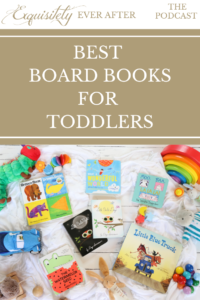
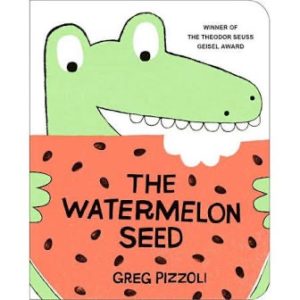
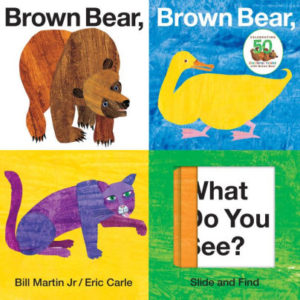
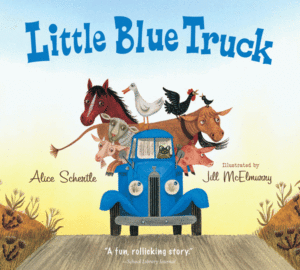
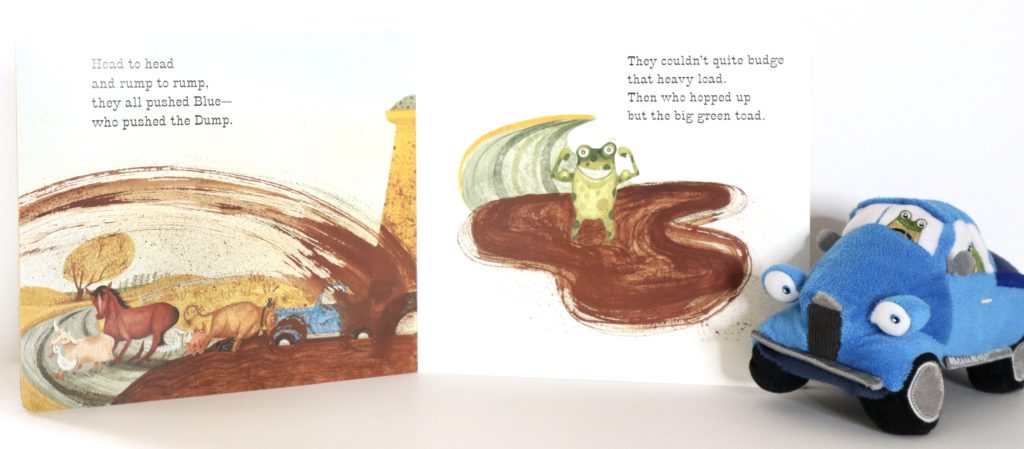
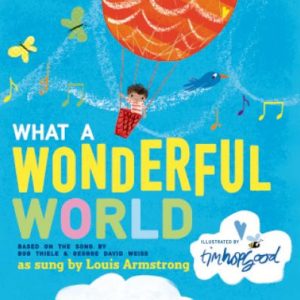
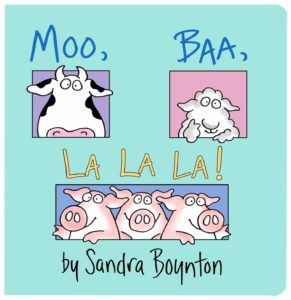
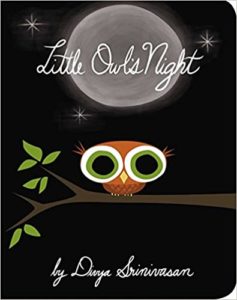
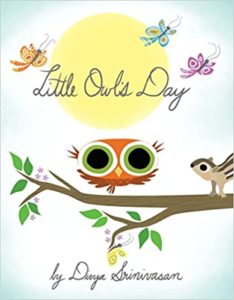
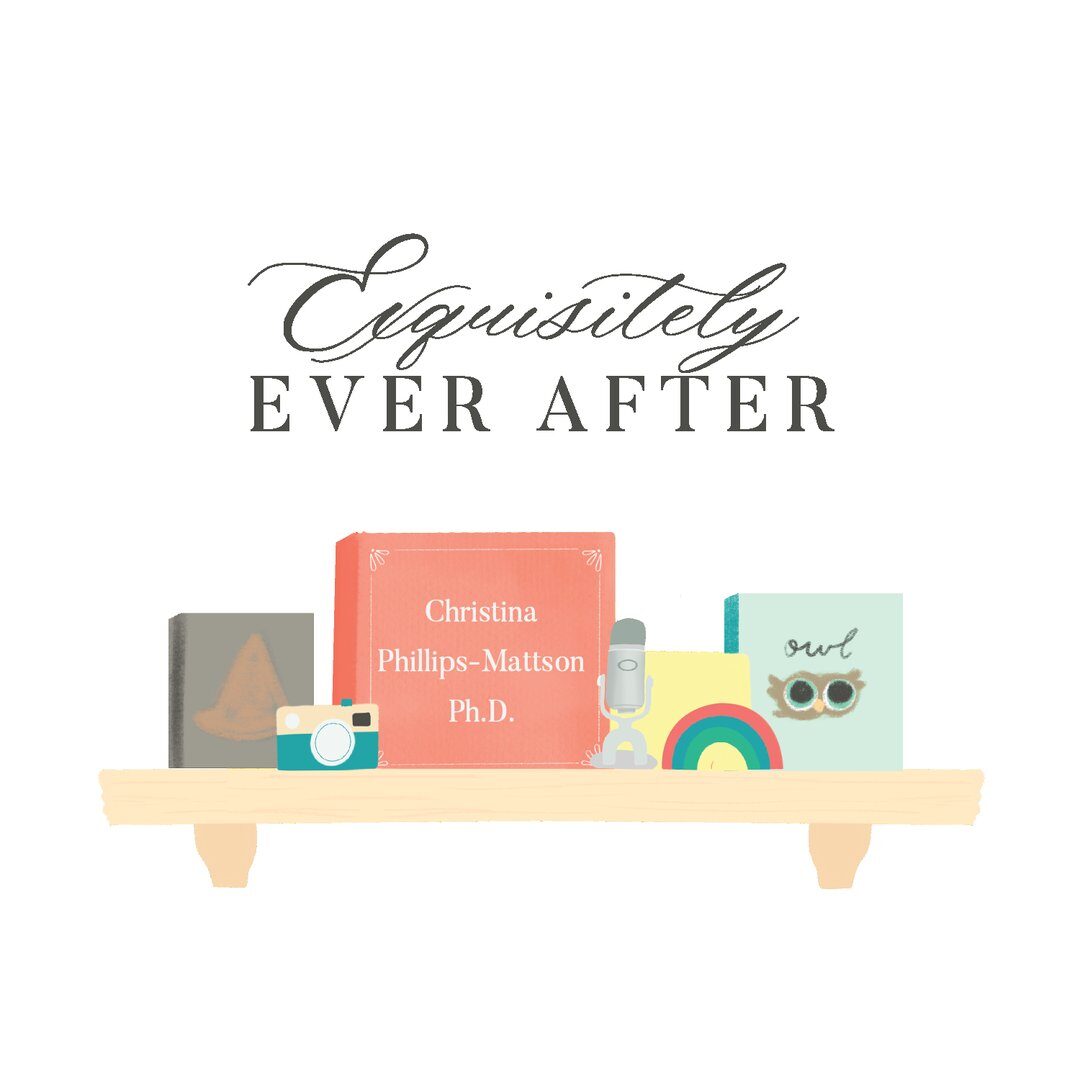

What a great list with wonderful explanations! Just ordered The Watermelon Seed, Little Owl Day, Little Owl Night, and What a Wonderful World!.. like you, I have a special place in my heart for a wonderful world with my grandparents. Can’t wait to add these in the rotation. Thank you so much for the recs.
Thank you so much, Ninamarie! I really appreciate it! Hugs and love to your adorable boys!